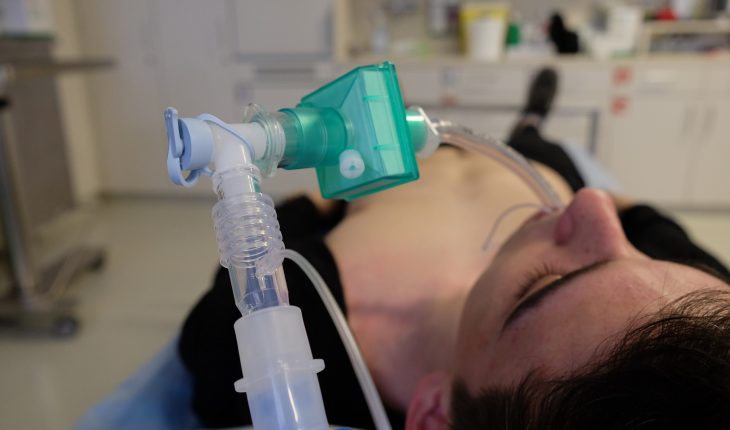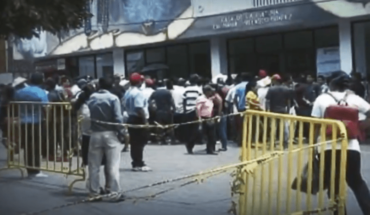Oxygen cells, solenoid valves and even a humidifier are some of the components that are required to materialize a mechanical fan, a device that in the middle of the pandemic has become a life expectancy for people most affected by COVID-19 disease.
But the challenge is not only to manufacture mechanical fans in record time and at lower cost, manufacturers must also consider a number of regulations to meet the quality standards requested by healthcare authorities.
As if that weren’t enough, they should be constantly adjusted by highly qualified professionals to ensure patients receive the right combination of pure oxygen flowing to the patient, air pressure, breathing volume and breathing rate. The ultimate goal is to save lives.
Read: Mechanical ventilation: a high-risk hope for COVID patients
The fan is the sum of its parts
These medical devices are much more than air pumps. Mechanical fans must maintain their quality for days of up to 14 or 15 days, the average time a patient needs to use the mechanical fan until he manages to breathe on his or her own.
“The parts used by ventilation equipment vary because each manufacturer has a design method,” says Javier Solís, who recognizes that there are parts that cannot be dispensed with.
Some of those parts are the oxygen cell that measures the concentration of oxygen in the air supplied by the mechanical fan; solenoid valves “that allow the passage of gases, open or close depending on how often ventilation to the patient is to be programmed,” says biomedical engineer Javier Solis.
According to the biomedical engineer, it is necessary that the device has a humidifier that heats the air as the nose would, and a high-efficiency antibacterial filter to prevent the spread of viruses through the tubes that are connected to the patient.
“A ventilation equipment can be highly invasive, which if it fails can cause more harm than good,” says Leobardo Ramos, biomedical engineer and member of the ALVI emerging fan initiative.
Regulation and development of a fan
Before the arrival of the new coronavirus no health system was prepared with enough mechanical fans. Hence the urgency to obtain them through donations or purchases.
Global demand has been so high that initiatives have emerged to manufacture mechanical fans in record time and at a lower cost than those of world-renowned brands.
According to the Mexican Society of Biomedical Engineering, so far, more than 30 proposals have been reported by engineers, biologists, doctors, technicians and civil society, to develop more respiratory equipment. However, not all options are feasible because they do not meet the type or quality standards requested by health surveillance.
“They need to follow various safety standards to protect patients. The first and main would be electrical safety,” says Javier Solís, a biomedical engineer. That is, the electrical energy required by the fan does not cause electrocution in the patient.
“The second safety standard is pneumatic, gas standard,” says Javier Solís. It not only contemplates the proper supply of air and oxygen, but also protects the patient from lung injuries.
“Those sockets are the sockets that are at the head of the patient’s bed, have a color code, yellow for air and green for oxygen; if they’re not under the right pressure, you’re practically risking the patient’s life,” he says.
Scientific information is currently available to all public on the manufacture of mechanical fans. This is known as open science and is used for prototyping, but no one escapes the Federal Commission for the Protection of Health Risks (Cofepris), the Mexican health surveillance body.
“Because the manuals of the International Electrotechnical Commission (IEC) were freely accessible, we were able to confirm a safety part of the prototype,” says biomedical engineer Leobardo Ramos.
Years earlier, manuals published by the IEC had prohibitive prices for small and medium-sized enterprises. “Each guide cost about 4 thousand pesos and there were six. It was a lot of money to invest in documentation,” says Leobardo Ramos.
“Information on these devices should be available to whoever isapaz to bring them to a practical end, as long as they go through the certification processes,” says Gustavo Medina, researcher at the Space Experimentation Laboratory (LINX) of the Institute of Nuclear Sciences of UNAM.
As a limitation, Leobardo Ramos accepts, “our device is designed to be safe and inexpensive, but we cannot compare this fan with one that has been on the market for five years and has been developed by companies that have more time developing ventilation equipment”.
Today Leobardo’s dad’s workshop, a craftsman dedicated to trophy production, is the operations center for the construction of his fan, which, after ten designs and four prototypes, will be tested on an animal model. “That’s how it has been, if we do something on the team, it feeds back with the advice of the doctors who tell us if it’s functional or not,” he says.
The development of the Ramos family is the first part of a long process to launch a medical device. This procedure in normal times lasts approximately five years, although because of the health emergency, they are not asked for preclinical and clinical tests.
“If you develop something, you take responsibility for its production, but also all its useful life,” says Lorena de la Garza, director of the College of Biomedical Engineers (CIB).
ALVI 1.0, prototype of artificial respirator created by the Ramos Nando Family.
The VSZ-20 fan developed by the National Institute of Medical Sciences and Nutrition “Salvador Zubirán”, is already approved but its price is 10 thousand dollars per unit.
The emergency fan of Gustavo Medina’s investigative group is in the process of approval and would cost $700. One of the limitations is that it could not be used for a patient who exceeds 100 kilos.
Our country is one of the ten exporters of medical equipment in the world, but mainly of maquila, not technology. “In Mexico we need to create our medical components, for example, flow sensors, a basic piece of electronics, we don’t develop it here,” says Leobardo Ramos.
“When you have labs like ours in state-of-the-art technology, all that knowledge can be recycled and reconfigured to attack other kinds of problems that have an immediate social impact,” suggests Gustavo Medina.
Among the lessons that this pandemic leaves us is to identify the infrastructure that is required to acquire in order to create future technological developments that deal with this or another pandemic that attacks our airways.
Gustavo Medina, mentions “in Mexico City there is a single sophisticated lung simulator and is in the Institute of Nutrition”. It is a challenge for developers outside the country’s capital who need to test their designs for certification.
For mechanical fan development initiatives to contribute to the industry, work teams must be interdisciplinary in engineering and medicine, this would strengthen the health system through collaboration, training and human resources training.
A new respite
The pandemic tested the world, no country was prepared, however, The Global Health Security Index (SGA), a project that rates health security and capacity to deal with infectious disease outbreaks in 195 countries, ranks Mexico at number 28 with a score of 57.6 out of a global average of 40.2.
Months before the pandemic, the Mexican government established the Institute of Health for Welfare (INSABI), now addressing the country’s needs in the face of this health emergency: more science and technology, more medical personnel and public policies that do not allow the sick population to live so that they can withstand a crisis like the one we are experiencing.
A study from the University of Cambridge suggests that more than 70% of Mexicans surveyed rated between 5/7 and 7/7 the importance of acting for the benefit of society and 3% do not consider it important ‘at all’. The result contrasts with the citizens of Germany and the United Kingdom, who show a more individualistic attitude.
“It is not COVID-19 that is producing high rates of lethality, but all those social structures determined by social categories such as gender, age and social class that predispose people to be most vulnerable to this disease,” said Ariel Vilchis, an academic at the Faculty of Medicine, UNAM.
Carlos Pantoja narrates that from 2001, protocols against pandemics such as SARS, MERS, H1N1, began to be developed,” “there are good empirical criteria for believing that this epidemics are going to continue with us.”
Pantoja explains that “mechanisms are already being set out to attack this” and “lMore important lesson is that health policies must be estranged from economic policies,” coupled with the big step of increasing medical residency and opening up spaces for the preparation of health professionals.
Beyond ideological and political confrontations, the federal government recognizes that the COVID-19 pandemic demonstrated the importance of strengthening public health systems; which is impossible to address the serious problem of chronic diseases.
Mexico’s response to the pandemic and the union between its citizens, scientists and medical staff shows that we are a prosocial country, where it is important to do things for the benefit of others despite personal costs.
While the COVID-19 pandemic is a blow that will leave indelible traces, it is an event that will help us strengthen resilience and take response actions from science and through its communication.
To read the first part of this article see: Mechanical ventilation: a high-risk hope for COVID patients
***
This article is part of the series of publications resulting from the 2020 Solution Journalism Scholarship, executed with the support of the Gabo Foundation, Solutions Journalism Network and Tinker Foundation.
What we do in Animal Político requires professional journalists, teamwork, dialogue with readers and something very important: independence. You can help us keep going. Be part of the team.
Subscribe to Animal Politics, receive benefits and support free journalism #YoSoyAnimal.
translated from Spanish: What should you have to keep a patient alive?
June 17, 2020 |





